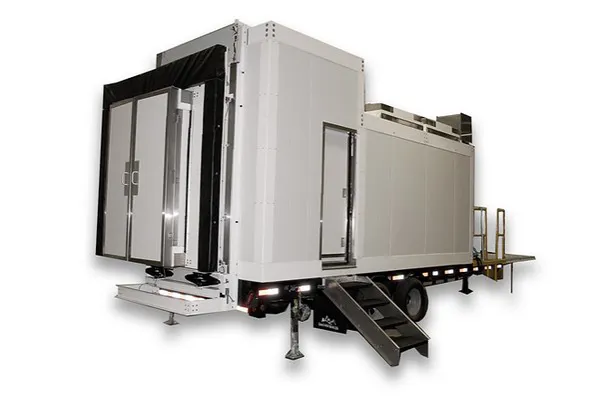It seems in 2022, now more than ever, growers are under cost pressures thanks to supply chain issues, inflation and more. Growers must deliver a fresh, attractive berry to the end user under tenuous conditions. As a result, there is growing consideration for automation investments in growing operations to help battle--in the short and long-term--escalating costs, including hard-to-find labor.
Cooling at grow site
Berry growers know the importance and immediacy needed to cool product and the grow site is the first opportunity. This is why a system such as the Highland ColdPICK M2, M6 and M8 may suddenly be a more attractive prospect to growers given this backdrop.
“Each system is portable, easy to set up and operate and no additional labor is required at the grow site. There is also a significant reduction in pallet touches at the distribution center which helps create a better time to market,” says Gregory Smith with GLC, ColdPICK. “M Series cools at better rates compared to tarp and tunnel systems used at the DC Cold Chain. The footprint available is a determining factor.”
As Smith notes, labor has been a key concern of all produce growers over the last decade, but even more so in the past couple of years. “Labor shortages from Mexico due to an aging labor supply, border security and immigration issues have slowed the ability to keep a steady supply of ‘family-oriented labor groups,’” he says. “This has been the backbone of our ‘labor culture’ throughout our
labor-oriented agricultural communities — California to Washington, Michigan, Georgia, Florida and the Carolinas. Crops in some cases were not harvested and peaks were sadly not maximized.”
 Smith says grow site cooling will also improve the quality and shelf life of the berries and maintain a firmer berry for further material handling.
Smith says grow site cooling will also improve the quality and shelf life of the berries and maintain a firmer berry for further material handling.
Labor advantages
So what is the connection between labor and the Highland ColdPICK’s M Series Post-Harvest Pre-Cool systems? “The labor associated with cold chain material handling is reduced and more importantly, a number of pallet touches can be eliminated,” Smith says.
He adds that the ‘M Series equipment also improves efficiency and time to market given that transportation between the grow site and the DC cooling systems is removed. “This eliminates material handling and the time and labor given the material handling required post-harvest, pre-cooling, at the distribution center.
Grow site cooling will also improve the quality and shelf life of the berries and maintain a firmer berry for further material handling.
At the same time, the ability to handle product has changed since the pandemic. “The pandemic changed our focus and material handling is key,” says Smith. “Material handling restrictions and regulations will cause a ‘multiplied’ shortage of pickers and packers of fresh fruit and vegetables at grow sites and packing houses. So, attention to every facet of the cold chain system is critical, including material handling at third party refrigerated transport and trans-shipment centers across the country.” As he says, this investment is about taking hands out of the packing equation.
The popularity of berries
While labor was one concern that emerged from the pandemic, berries have their own tie to the global event. They are one of the key categories that have come out of it seeing continually growing demand from consumers. And how you cool each one of these high-value varieties of berries needs to be considered and grow site cooling should be involved, says Smith.
“M Series post-harvest portable cooling needs to be considered. This step minimizes costs associated with labor,” he says. However, he notes that the stumbling block to this change in the material handling protocol is the post-harvest grading and branding step. “The M Series has a ‘staging step’ to allow full pallets to be built from partials during the cold chain. If duplicity of this step is considered an existing protocol issue (inspection) the grading step can be made “inclusive” and a part of the entire process at less expense given a stage of material handling is eliminated.”
 For more information:
For more information:
Gregory G. Smith
The Green Living Company, Inc
Tel: +1 (863)581-7279
gurrsmith48@outlook.com
www.thegreenlivingcompany.com
